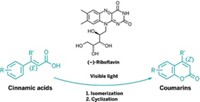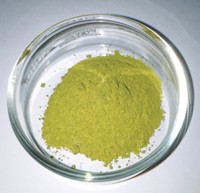Advertisement
Grab your lab coat. Let's get started
Welcome!
Welcome!
Create an account below to get 6 C&EN articles per month, receive newsletters and more - all free.
It seems this is your first time logging in online. Please enter the following information to continue.
As an ACS member you automatically get access to this site. All we need is few more details to create your reading experience.
Not you? Sign in with a different account.
Not you? Sign in with a different account.
ERROR 1
ERROR 1
ERROR 2
ERROR 2
ERROR 2
ERROR 2
ERROR 2
Password and Confirm password must match.
If you have an ACS member number, please enter it here so we can link this account to your membership. (optional)
ERROR 2
ACS values your privacy. By submitting your information, you are gaining access to C&EN and subscribing to our weekly newsletter. We use the information you provide to make your reading experience better, and we will never sell your data to third party members.
Synthesis
Cross-Coupling Made Easier
Green Chemistry: Organozinc reagents made on the fly in water simplify alkylations
by Stephen K. Ritter
October 26, 2009
| A version of this story appeared in
Volume 87, Issue 43

An easier, greener route to aryl-alkyl cross-coupling reactions—one of the most indispensable types of reactions in organic synthesis—is being reported by Bruce H. Lipshutz and coworkers at the University of California, Santa Barbara (J. Am. Chem. Soc., DOI: 10.1021/ja906803t).
The approach takes advantage of micelles as nanoreactors for the in situ generation of an alkylzinc reagent that sparks a standard palladium-catalyzed Negishi cross-coupling reaction. Using aqueous conditions and generating the organozinc reagent on the fly at room temperature weren’t thought to be possible for this type of cross-coupling before now.
The strategy builds on Lipshutz’ efforts to use nanomicelles as a medium for transition-metal-catalyzed reactions. Lipshutz, Arkady Krasovskiy, and Christophe Duplais made a micellar solution by dissolving in water one of Lipshutz’ designer nonionic surfactants—the commercially available polyoxyethanyl α-tocopheryl sebacate.
The water-insoluble aryl halide substrate, alkyl halide, and palladium catalyst migrate to the inside of the micelles, where the concentration of the reactants builds up, Lipshutz explains. When inexpensive zinc powder and a diamine ligand are added, the heterogeneous zinc collides with the nanomicelles.
Zinc inserts into the alkyl halide, forming RZnX in situ, a strategy that avoids having to preform the zinc reagent. The micellar environment protects the water-sensitive alkylzinc as it couples with the aryl halide to form the alkylation product.
“In essence, one need only dump the ingredients into water containing the micelles, add inexpensive zinc powder, and stir,” Lipshutz says.
“Innovation is the key driver for sustainability and future competitiveness,” comments Axel Jacobi von Wangelin of the University of Cologne, in Germany, whose group devised a simple magnesium-iron cross-coupling reaction earlier this year (C&EN, Jan. 12, page 6). “In that regard, Lipshutz’ team has produced an instructive demonstration of the fusion of two concepts: organometallic reagents and water as a solvent. This is yet another piece of the puzzle solved toward the greening of fine chemical synthesis,” Jacobi von Wangelin says.





Join the conversation
Contact the reporter
Submit a Letter to the Editor for publication
Engage with us on Twitter